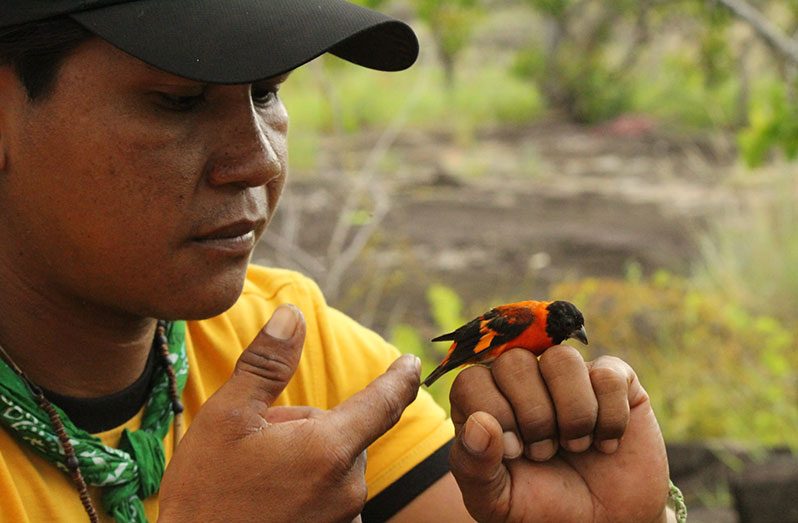THE South Rupununi Conservation Society (SRCS) recently announced its Conservation Leadership Award by the Conservation Leadership Programme (CLP) which represents the final step of support that has spanned almost 20 years from when SRCS was first awarded a ‘Future Conservationist Award’ in 2005.
The award is expected to be used to help create a Community-Based Conservation Management Zone to protect the Red Siskin across its range in Guyana since the country is one of the few places where the Red Siskin can be found.
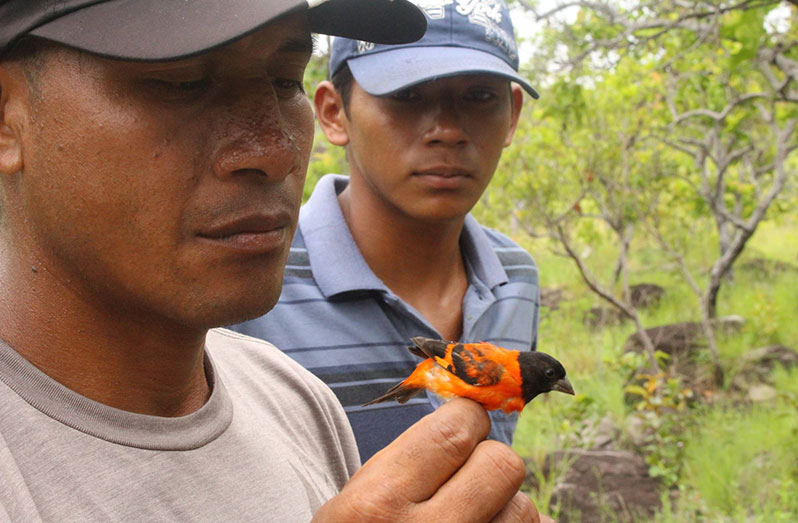
This zone is essential in protecting the Red Siskin from threats, including habitat destruction and trapping. The bird has already been classified as Endangered on the IUCN Red List.
In the early 2000s, a group of scientists from the Smithsonian Institute accompanied by local guides from the tour operator, Rupununi Trails, made a discovery that was set to shock the global scientific community and drastically change the future of conservation in the Rupununi. The group identified a Red Siskin (Spinus cucullatus), a seed finch that, until then, was only known to be found hundreds of miles away in northern Venezuela.
At that time, the Red Siskin was classified as “Critically Endangered” due to its history of being intensely trapped for the purpose of selling which resulted in a severe population decline to the point where it was almost impossible to find one in the wild.
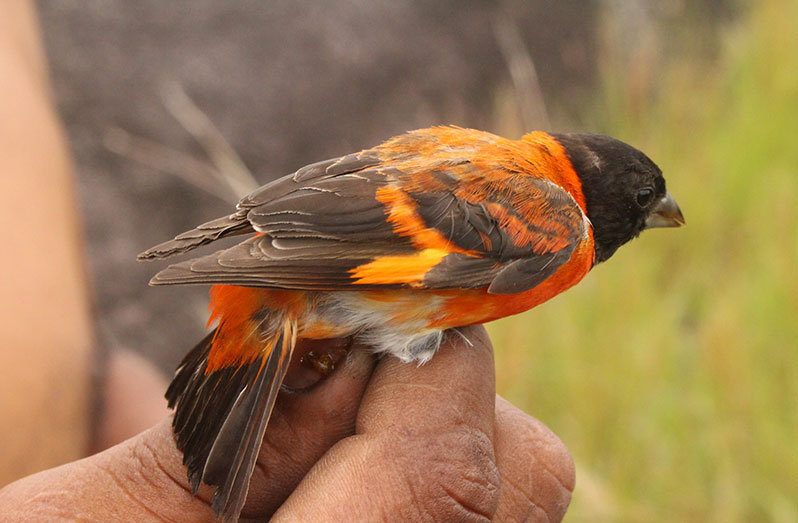
The unexpected discovery of the Red Siskin catalysed a group of nature-loving friends who had noticed a decline in the abundance of wildlife in the Rupununi to form SRCS in June 2002. The aim of SRCS is to “through adaptation, sustain a healthy environment for the people, plants and animals of the Rupununi.”
The first task for the newly formed SRCS was to understand more about the Red Siskin and to ensure that their population was safe from the threats that they had faced in Venezuela. To do this, SRCS recruited members from Indigenous communities across the South Rupununi who shared the founding group members’ passion for wildlife, the environment and adventure.
However, at this point, SRCS had no funding or previous experience with managing grants. Yet this changed in 2005 when they were awarded their first grant by the Conservation Leadership Programme (CLP). This was “Stage One” of the grants offered by CLP and was referred to as a “Future Conservationist Award.”
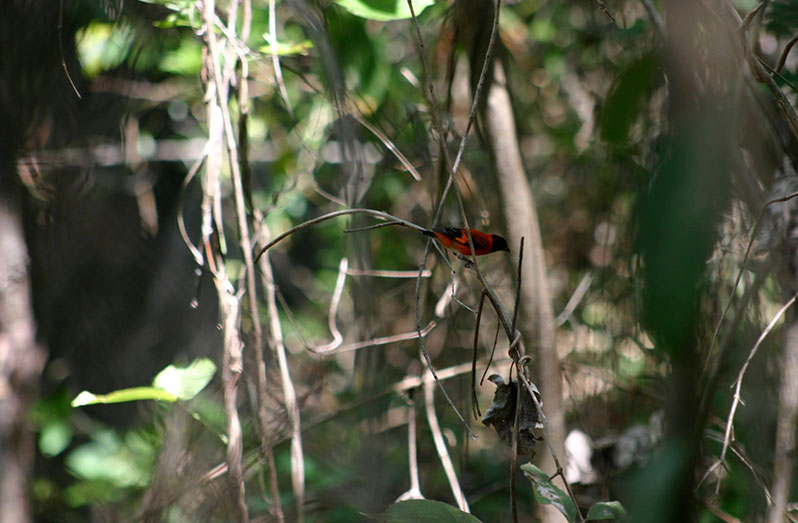
This funding allowed SRCS to train new recruits in skills such as binocular use, GPS use, bird identification and bird handling to become SRCS rangers. After this first CLP award, it was difficult for SRCS to secure another grant due to the same issues. As such, the members spent the next five years volunteering to collect important information on the Red Siskin.
Then, in 2013, SRCS was awarded the “Stage Two” of funding by CLP known as the “Conservation Follow-up Award.” This grant helped SRCS to accelerate efforts to collect data that was new to science, including the range of the Red Siskin in Guyana, their population size and their genetic code.
The success and attention brought about by the second CLP grant then allowed SRCS to successfully apply to other grants to broaden their work on the SRCS. Over time, it then allowed SRCS to expand its work to other threatened species, including the Giant Anteater and the Yellow-spotted River Turtle.
However, despite the progress made in understanding the Red Siskin, SRCS rangers discovered that the Guyanese population of the Red Siskin was under threat from trapping, trading and habitat destruction. If these threats were left unabated, it was possible that the Guyanese population of Red Siskins could have severely declined. As such, SRCS applied for the third and final stage of CLP funding, known as the “Conservation Leadership Award” to find a solution to this problem.
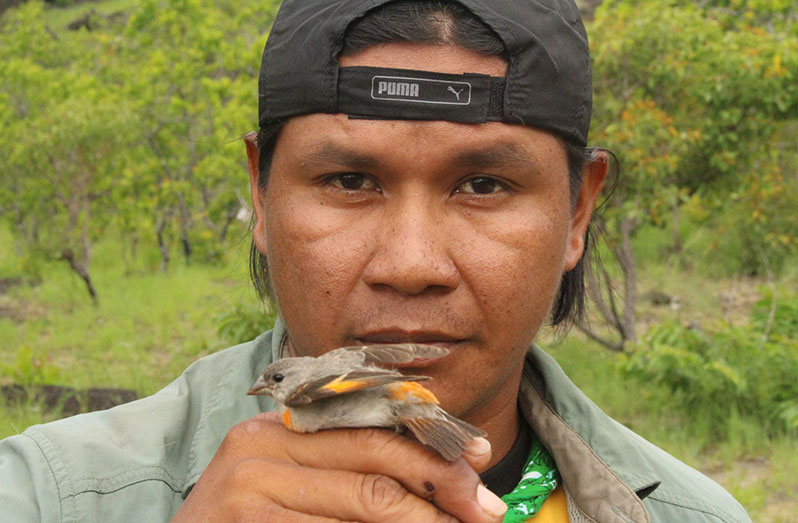
Now that the SRCS has been awarded the stage three grant, it will allow the organisation to further engage the six Indigenous communities on whose titled and proposed extensions where the Red Siskin’s range occurs – Sand Creek, Sawariwau, Katoonarib, Rupunau, Shulinab and Potarinau – to work together to find a solution.
It is planned that SRCS in collaboration with the communities, will create a “Red Siskin Community-Based Conservation Management” zone, which would be one of the first of its kind in Guyana. The zone would cover the known range of the Red Siskin and have a set of rules whose purpose is to protect the Red Siskin that will be decided upon by the six communities. The zone would then be monitored by SRCS rangers from each of the six communities with the aim of a reduction in the number of threats and a hopeful increase in their population.
Since the discovery of the Red Siskin, the number of tourists travelling to the South Rupununi has significantly increased, with eager bird-watchers travelling from all across the world to see the magnificent little red bird. This has benefited the local communities, who are now able to find opportunities as guides, caterers, accommodation providers, transportation providers and more.




.png)


